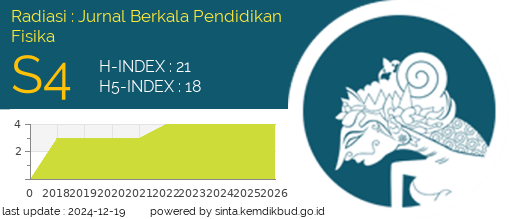Kajian Proporsi Aktivitas Fisik dan Kognitif pada Pembelajaran Aktif Fisika: Model Pembelajaran Two Stay Two Stray
Abstract
TSTS (Two Stay Two Stray) is one of the learning models often used by educators to make students were doing active learning activities. Still, the educators usually did not pay attention to the lack of that learning model. Some cases found that learning objectives that should have been stressed on the cognitive activities were not achieved because the physical activities are more dominant than cognitive activities during the learning process. This study aimed to investigate whether lesson plans and video of TSTS cooperative learning more emphasized cognitive or physical activities by examining the compatibility between investigated cognitive and physical activities toward the learning objectives of science. There is qualitative research that is analyzed descriptively using the lesson plan sample and video of physics learning applying TSTS. The data analysis of this study was performed by examining a table that contains the possibility of the students’ activities for the lesson plan and students’ activities. That was observed using video during the learning process than were grouped in the physical or cognitive activities based on the operational verb of Bloom Taxonomy. The result of the study is both the lesson plan and video show that cognitive operations are more dominant than physical activities. It means that those activities are following the purpose of science learning. The average of cognitive activities is 77,4%, and physical activities are 22,6%. The educators are suggested to attend the proportion of physical and cognitive activities so that the purpose of science learning can be achieved optimally.
Downloads
Copyright (c) 2019 Diah Aprilia, Wahyu Hari Kristiyanto, Debora Natalia Sudjito

This work is licensed under a Creative Commons Attribution-NonCommercial 4.0 International License.




